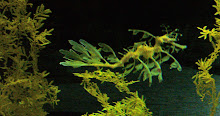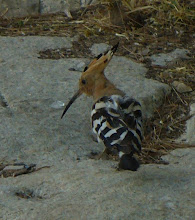The link is to an article about "Pizzly bears" (also known as "Grolar bears") : in short, what happens "when a Mummy polar bear and a Daddy grizzly bear (or the other way around) love each other very much" - http://www.slate.com/id/2253332/....
Really, the article talks about the factors that determine whether or not hybridisation is possible between two species. In short, on a genetic level, this seems to be the specific nature of the differences between them- for example, one reason that humans and chimpanzees could not produce fertile offspring is because chromosome 1- a very large chromosome in humans- is split into two smaller pieces in the chimp, which would cause all manner of problems in individual cells of an embryo if a human egg were ever fertilized by chimp sperm- or vice versa.
The genetic differences that exist between some other animal species are sufficiently few in number and inconsequential in molecular nature that they do not have these problems when or if they hybridise/mate - thus we get all manner of splendidly weird creatures from "Dzo"s, "Dzomo"s, "Wolphin"s and "Yakalo"s to "Ligers" and "Pizzly" bears.

Baby Wolphin- Image by Mark Interrante- reproduced in accordance with the image's creative commons licence 2.0 from http://en.wikipedia.org/wiki/File:Baby_wolphin_by_pinhole.jpeg
I guess, I keep coming back to this question of hybrid animals, not because I am a twisted individual, but because it begs the question "if two species can mate, then why don't they do so and form a single species?", which, in turn raises questions about the standard definition of a species and the way in which new species are formed (evolve). The truth is, that the concept of a species is not entirely clear cut and the boundaries between "race", "sub-species" and so on can be similarly muddled. Teasing away at the boundaries of our defintions seems pedantic, but with luck will allow us (mankind, scientists) to make them clearer and understand the underlying principles that shape the world that we see.
There is a lot more inforamtion on this subject on wikipedia here - http://en.wikipedia.org/wiki/Speciation#Genetics
The other link-of-the-week is something a bit different... a little while back, I got to see a re-run of the t.v. documentary "Alien worlds" (also screened as "extraterrestrial"). It is one of the better programmes that has been made exploring the scientific evidence/possibilities for extraterrestrial life. Admittedly, this genre has spawned some very poor television, but "alien worlds" is still a gem.
The part of the "Alien worlds" programme which most caught my attention was some ideas first proposed in the 1970s in a bizarre paper by Carl Sagan and Edwin Salpeter. The paper- “Particles, Environments, and Possible Ecologies in the Jovian Atmosphere.” was an odd essay, part science and part science fiction; essentially an intelligent guess about what life would be like on the planet Jupiter, if it had/has evolved there.
This link- http://www.centauri-dreams.org/?p=6308 - leads to a great essay/blog on the subject. Wikipedia has more information in its "Aurelia and Blue Moon" entry here- http://en.wikipedia.org/wiki/Aurelia_and_Blue_Moon

Carl Sagan, Public Domain image by NASA.
One of the most exciting predictions of this paper was about hot-air-balloon-like floating organisms living permanently in the Jovian atmosphere. Having spent some time studying marine organisms (notably jellyfish) when I was at Oxford, I can see a number of paralels between the balloon-plants ("aerialists") that Sagan and Salpeter envisioned floating in the atmosphere of Jupiter and known living organisms found floating in our seas.
Earlier this week, the first episode of the new series "Stephen Hawking's Universe" was screened. The episode, which was concerned with extra-terrestrial life touched on the idea of "balloon plants" (although not by name) as well as a host of other weird and oddly endearing possibilities for alien life, before concluding that if aliens exist, contacting them is probably not in mankind's best interests. http://uk.news.yahoo.com/5/20100425/tod-contacting-aliens-a-bad-idea-warns-h-870a197.html I tend not to watch many television documentaries, but in the case of "stephen Hawking's Universe", I am really looking forward to the next episode.









I too saw the Stephen Hawkins programme and found it very interesting.Both her and Carl Sagan have wonderful minds. I hope that we have not inadvertantly allerted any alien life systems out there to our existance, although I think that if they are that advanced then they have probably better things to do that associate with such a backward group as those on Planet Earth. Hope so anyway. Love your links and interesting articles.
ReplyDelete